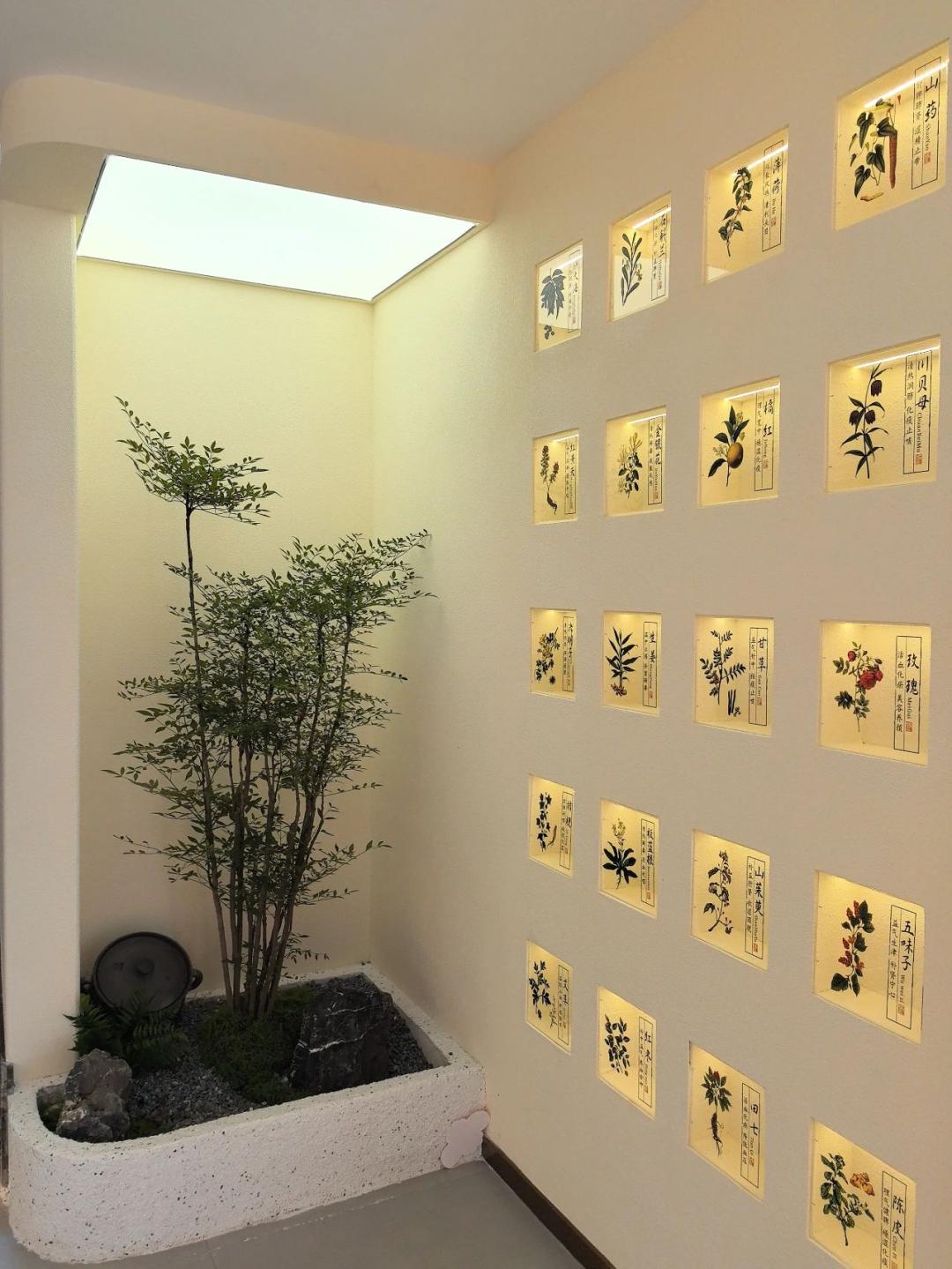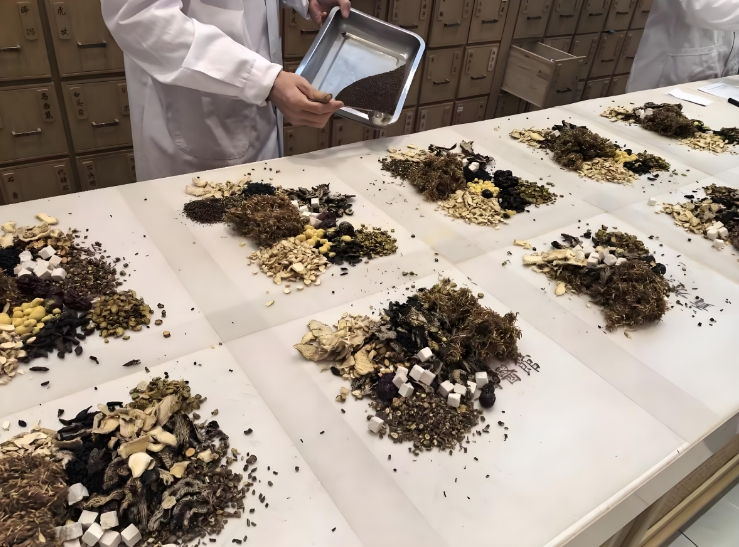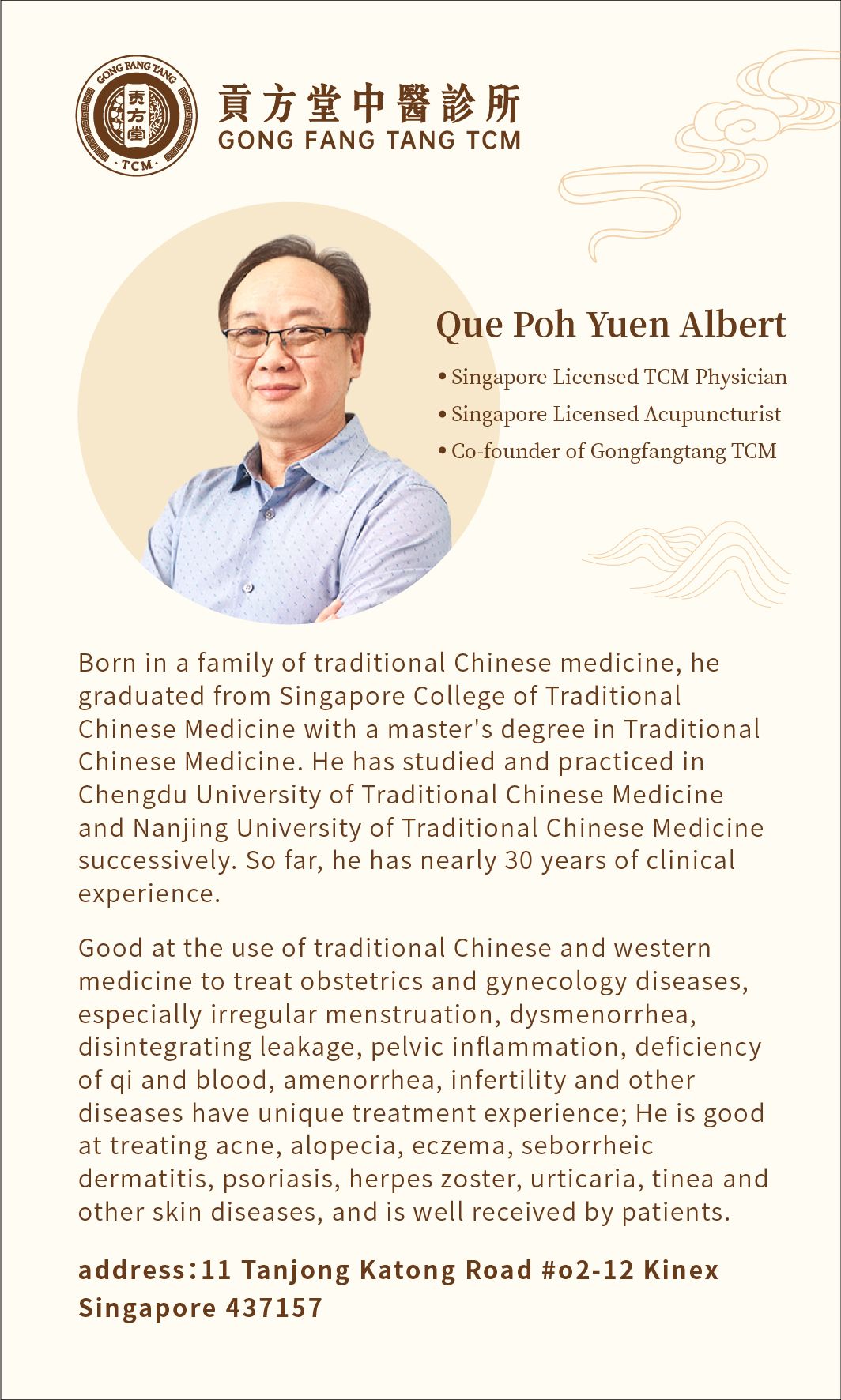- Physicians
- Clinics
- TCM
- Western GP
-
Fees
-
Deals & Privileges
- About & Resources
- Contact Us
The words "breast nodule" on a physical exam report make many women's hearts tighten? It's like a small stone quietly dropped, sending ripples of worry across the calm surface of health: Is this serious? Could it worsen? Does it require surgery?

How do nodules form?
TCM expert Dr. Que Poh Yuen Albert from Gong Fang Fang TCM Singapore explains that in TCM theory, the breasts belong to the pathway of the Liver meridian. The formation of breast nodules is fundamentally linked to the pathological mechanisms of "Liver Qi Stagnation" (Gan Yu Qi Zhi) and "Phlegm-Stasis Intermingling" (Tan Yu Hu Jie).
Liver Qi Stagnation is the starting point: Long-term emotional disharmony (high stress, anxiety, depression, tendency to bottle up anger), disrupted lifestyle routines, etc., lead to dysfunction of the Liver's free-flowing (Shu Xie) function. Qi movement becomes obstructed, stagnating in the chest, flank, and breast area. Obstruction causes pain (manifesting as breast distending pain, especially worsening before menstruation).
Phlegm-Stasis Intermingling is the result: Prolonged Liver Stagnation transversely attacks the Spleen, weakening its transportation and transformation (Yun Hua) function. This leads to internal accumulation of Dampness, congealing into Phlegm. Simultaneously, Qi stagnation causes Blood circulation to slow, gradually forming Blood Stasis. Turbid Phlegm and stagnant Blood intermingle, obstructing the meridians within the breast, and congealing into form – this is the nodule or lump we see.
Simply put: Emotional disharmony ➜ Liver Qi Stagnation ➜ Affects Spleen/Stomach ➜ Generates Phlegm ➜ Qi Stagnation & Blood Stasis ➜ Phlegm-Stasis Intermingling ➜ Forms Nodules.

How does TCM regulate breast nodules?
For breast nodules of the Liver-Stagnation-Phlegm-Congealing type (one of the most common clinical patterns), Physician Dr. Que Poh Yuen Albert highly advocates and excels at using Xiaoyao Loubei San (Free and Easy Melon and Fritillaria Powder) for regulation. This formula is a skillful combination derived from the core herbs of the classic formulas Xiaoyao San (Free and Easy Wanderer Powder) (soothes Liver, strengthens Spleen) and Xiaoluo Wan (Scrofula-Dissolving Pill) (resolves Phlegm, softens hardness, disperses masses), addressing both the root cause and the symptoms.
Xiaoyao Loubei San is composed of Chaihu (Bupleurum Root), Danggui (Chinese Angelica), Baishao (White Peony Root), Fuling (Poria), Baizhu (Largehead Atractylodes Rhizome), Gualou (Snakegourd Fruit), Zhebeimu (Thunberg Fritillary Bulb), Banxia (Pinellia Rhizome), Nanxing (Arisaema Rhizome), Shengmuli (Raw Oyster Shell), and Shancigu (Creasted Iris Rhizome). It is a classic formula for soothing the Liver, regulating Qi, resolving Phlegm, and dispersing masses.
In the formula:
Chaihu soothes the Liver and relieves stagnation.
Danggui and Baishao nourish Blood and soften the Liver.
Fuling and Baizhu strengthen the Spleen and dispel Dampness, cutting off the source of Phlegm.
Gualou and Zhebeimu clear heat, resolve Phlegm, and disperse masses.
Banxia and Nanxing dry Dampness and resolve Phlegm.
Shengmuli and Shancigu soften hardness and disperse masses. The whole formula addresses both root and branch, regulating the Qi mechanism of the organs while also dispersing the tangible masses. In clinical practice, Physician Qiu will flexibly modify the formula based on individual patient differences to enhance therapeutic efficacy.
Skillful Modifications:
If distending pain is prominent, add Xiangfu (Cyperus Rhizome), Yujin (Turmeric Tuber), Qingpi (Green Tangerine Peel) to enhance Qi-regulating and pain-relieving power.
If the mass is hard and the course of illness is long, add Sanleng (Common Burreed Tuber), Ezhu (Zedoray Rhizome), Xiakucao (Common Selfheal Fruit-Spike), Shancigu (Creasted Iris Rhizome) to strengthen Blood-activating, stasis-breaking, Phlegm-resolving, and mass-dispersing effects.
If accompanied by Blood Stasis (purple-dark tongue body, stabbing pain), add Danshen (Salvia Root), Taoren (Peach Seed), Honghua (Safflower).
If stagnation has transformed into heat (dry mouth, bitter taste, irritability, red tongue with yellow coating), add Mudanpi (Tree Peony Bark), Zhizi (Gardenia Fruit), Lianqiao (Weeping Forsythia Capsule) to clear heat.
If Spleen deficiency is evident (fatigue, poor appetite, loose stools), increase Baizhu and Fuling, or add Dangshen (Codonopsis Root), Huangqi (Astragalus Root).

Medical Case
Patient: Ms. Li, 32 years old.
Chief Complaint: Recurrent bilateral breast distending pain for over 2 years, most severe in the week before menstruation. Multiple small palpable nodules. Recent ultrasound showed: Bilateral breasts with multiple hypoechoic nodules, largest in right breast approx. 8x5mm (BI-RADS 3), left breast approx. 6x4mm (BI-RADS 3). Usually experiences high work stress, anxiety, irritability/anger, frequent chest stuffiness, tendency to sigh, poor appetite, average sleep.
Initial Consultation: Slightly dark tongue body, mild tooth marks on edges, thin white slightly greasy coating, wiry-thin pulse.
Diagnosis: Ru Pi (Breast Masses / Hyperplasia with Nodules) (Liver Stagnation, Spleen Deficiency, Phlegm-Qi Intermingling).
Treatment Principle: Soothe the Liver and relieve stagnation, strengthen the Spleen and resolve Phlegm, soften hardness and disperse masses.
Prescription: Modified Xiaoyao Loubei San.
Formula: Chaihu (Bupleurum) 12g, Danggui (Angelica) 10g, Baishao (White Peony) 15g, Fuling (Poria) 15g, Chao Baizhu (Stir-fried Atractylodes) 12g, Jiang Banxia (Ginger-processed Pinellia) 9g, Zhebeimu (Fritillary) 15g, Quan Gualou (Whole Snakegourd Fruit) 15g, Sheng Muli (Raw Oyster Shell) 30g (decocted first), Xiakucao (Selfheal) 12g, Yujin (Turmeric) 10g, Zhi Gancao (Honey-fried Licorice) 6g. 14 doses. Decocted in water, one dose per day, taken morning and evening.
Medical Advice: Advised to regulate emotions, avoid staying up late, and avoid spicy/stimulating foods.
Second Consultation: After taking the medicine, breast distending pain significantly reduced, mood more stable, chest stuffiness and sighing decreased. Continued the above formula for another 14 doses.
Result: With minor modifications based on presentation (e.g., adding Dangshen/Codonopsis to strengthen Spleen, Danshen/Salvia to activate blood), total regulation period was three months. Follow-up breast ultrasound showed the original right breast 8x5mm nodule reduced to 4x3mm, the left breast 6x4mm nodule was indistinct (or very small). Breast distending pain basically disappeared. Mood, sleep, and appetite all significantly improved.
